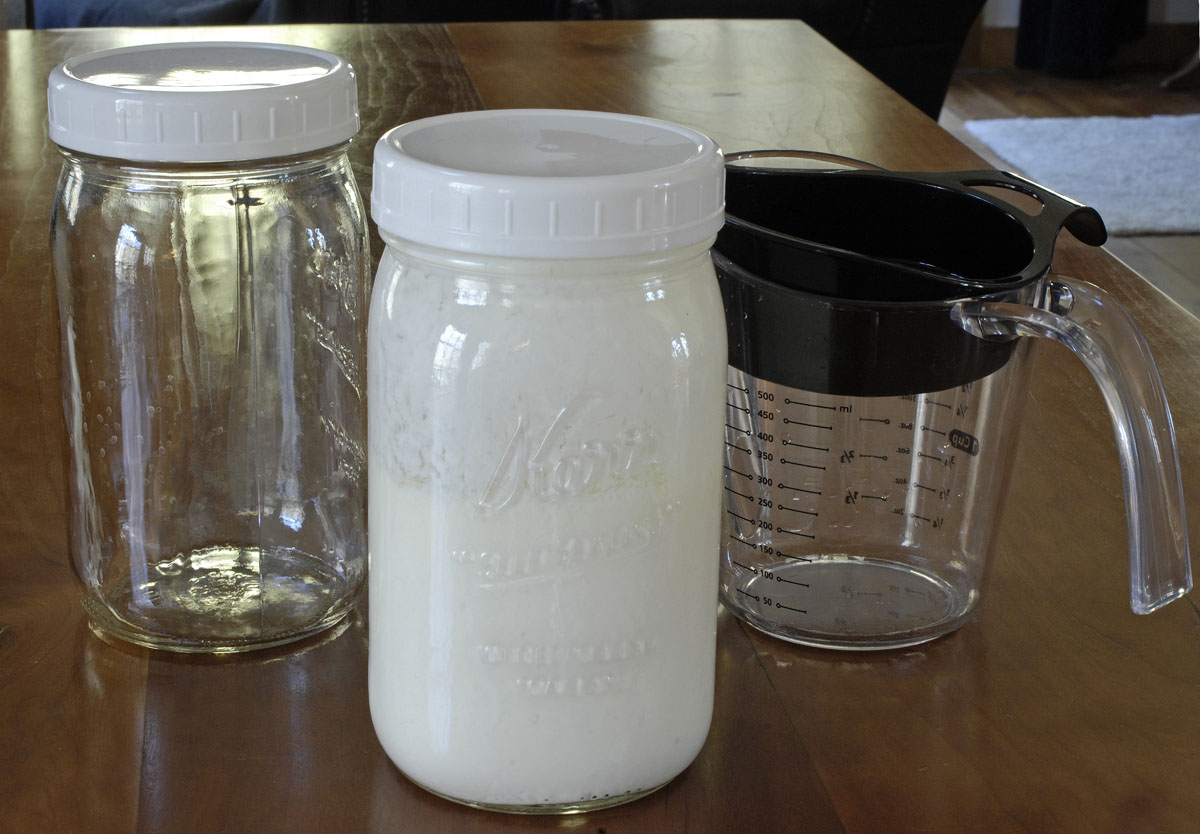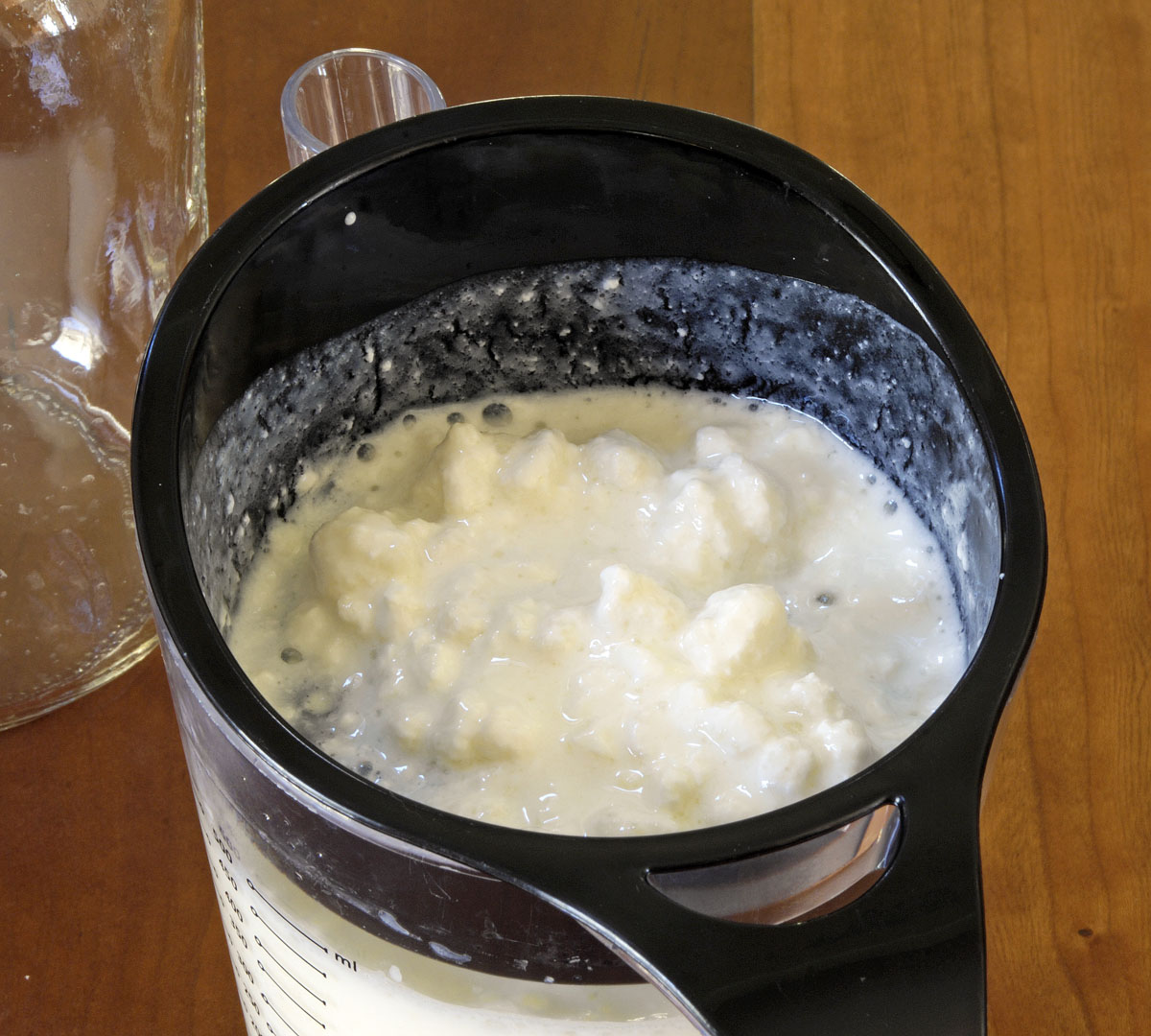Kefir-lovers swear that kefir has even more probiotic virtue than yogurt. I have read that kefir culture persists in our digestive systems but that yogurt culture is transient. I have no idea if that is true. But personally I find that I like kefir better. And kefir is easier to make than yogurt.
Yogurt needs to incubate at a bit higher than room temperature. Hence we use yogurt makers to keep the culture warm. Kefir, on the other hand, works its magic at room temperature. You don’t need anything to make kefir other than a culture to start with, some glass jars, a coarse strainer, and some good milk.
Yogurt is easy to find. Kefir is not as common. Store-bought kefir, though you can buy it plain, is usually heavily sweetened and fruit flavored, increasing the calories by at least 50 percent. If you’re new to kefir, it’s something you drink rather than eat with a spoon. Kefir thickens as it cultures. It looks — and tastes — a lot like buttermilk. But if the information one Googles up can be believed, kefir is a more complex colony of bacteria than buttermilk.
I love the taste of plain kefir. It “sparkles” in the mouth like champagne. The freshly fermented flavor gets up your nose. When you drink fresh kefir, you know it’s alive.
To get started with kefir, you need a starter culture, which is called “kefir grains.” Kefir grains look to me like cottage cheese. You can order them from Amazon. It will take a week or so to re-invigorate kefir grains. They survive being mailed, but they don’t like it. After your kefir grains are healthy and happy and you start your kefir routine, you strain the grains from the finished kefir and put the grains into a new batch of fresh milk. I plan to experiment with vegan kefirs made from coconut milk (which I understand works fine) and almond milk, though I believe kefir is healthiest and happiest in cow’s milk or goat’s milk. You can put your kefir culture on hold — for a while — by putting it into the refrigerator. But like all cultures such as sourdough bread cultures, kefir needs to be periodically fed.
Those of you who were health nuts back in the 1970s will remember the nutritionist Adele Davis. In those days, the emphasis was on vitamins and minerals and protein. As a hippy who also had a copy of Jethro Kloss’ Back to Eden, I realized even then that the mystery of good health was more complicated than just vitamins, minerals, and protein. Since then, we’ve learned a great deal more about the importance of our internal flora. I don’t use a lot of milk. Too much milk causes me to gain weight. But I think that a good policy would be, when one drink’s milk, to drink only a cultured milk such as kefir.
Here’s a hat tip to one of this blog’s readers (she knows who she is) who counseled me on getting started with kefir.



In the mid 1970s I was studying in West Germany. A friend asked me to bring her some Nivea Milch (Nivea Milk) from town. I looked over the entire grocery store but couldn’t find it.Nivea wasn’t available then in USA. I was thoroughly confused and brought her a bottle of Kefir. To this day we laugh about the use of “milk” in German where we use “cream” in English. Thanks for a trip down memory lane.